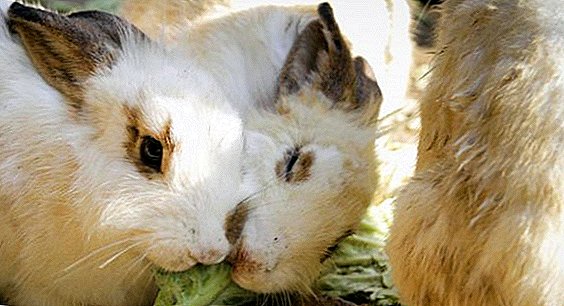 Elegant German exhibition pigeons are now decorative, although initially it was a sports bird. This breed gave rise to the German postal pigeons, but their modern exhibition descendants do not have those qualities that are inherent in the postmen.
Elegant German exhibition pigeons are now decorative, although initially it was a sports bird. This breed gave rise to the German postal pigeons, but their modern exhibition descendants do not have those qualities that are inherent in the postmen.
They are valued as decorative by aesthetic parameters, and the name of the breed speaks for itself.
History of origin
The history of the exhibition pigeons began in the early 19th century, when a breed of Antwerp exhibition pigeon was bred. By the 80s, English show breed was bred (seam homer). They aroused interest among German zootechnicians who wished to bring out their own decorative race. This work began at the beginning of the 20th century, and the German flight dove was taken as a basis.
Read about a dozen of the most unusual breeds of pigeons.
It was supposed to bring out the pigeon, which will have beautiful and harmonious forms, full of nobility, and possess the abilities of a strong flyer. It was supposed to make the shape of the head is not as exaggerated as the English exhibition. This race had to meet high aesthetic requirements, as well as be distinguished by precocity.  The first German club, which was created by lovers of exhibition pigeons, was registered in Leipzig, in 1905. The breed was soon recognized and widely exhibited, although the type was still very inconstant. To comply with the general rules and monitor the evaluation criteria for the experts that worked at the exhibitions, they appointed an instructor.
The first German club, which was created by lovers of exhibition pigeons, was registered in Leipzig, in 1905. The breed was soon recognized and widely exhibited, although the type was still very inconstant. To comply with the general rules and monitor the evaluation criteria for the experts that worked at the exhibitions, they appointed an instructor.
In order to eliminate the manifested defects in the breed, recommendations were developed for crossing only pure breeds of pigeons. The lack of unified rules dictated the creation of a single union, under the auspices of which clubs existing at that time could unite.
Important! Such a union, created in 1921, developed and approved a standard for the image created by Sciffert and Aschersleben.
The breed received an incredible popularity of European proportions, and from time to time in the press there were suggestions that the standard was revised and clarified, based on the current state of the breed, differences broke out among the poultry farmers. In 1948, a joint meeting of members of the union was held, where they discussed and approved the previous standard without any changes.
In 1948, a joint meeting of members of the union was held, where they discussed and approved the previous standard without any changes.
It is interesting to know how the pigeon post worked before and what breeds of pigeons exist.
Improving the breed and keeping the bird in the aviary for half a century has given excellent results, reflected in its quality, and improved pigeon shapes:
- its weight;
- body size;
- bird posture;
- body length;
- proportionality of body parts to the body;
- head and beak, strong and tightly closed;
- eyelid.
 Post-war Eastern Europe was totally addicted to pigeon breeding, and the German exhibition unusually attractive handsome man, brought from the GDR, immediately fell to the court. No wonder, because his noble appearance spoke not only about exhibition value, but also about strength and endurance.
Post-war Eastern Europe was totally addicted to pigeon breeding, and the German exhibition unusually attractive handsome man, brought from the GDR, immediately fell to the court. No wonder, because his noble appearance spoke not only about exhibition value, but also about strength and endurance.
Important! The post-war popularity of the breed led to an uncontrolled crossbreeding of representatives of the breed with other birds, as a result of which important breed qualities were lost, a lot of mestizo appeared. Partly because of this, partly due to the emergence of new domestic breeds, after some time the poultry farmers to the “Germans” cooled down a lot.
The popularity of the breed has become extraordinary. But, as it happens, the craze with the participation of a large number of non-specialists did a disservice to the German exhibition's gene pool, it was undermined by:
- uncontrolled general dilution;
- confusion with breed standards;
- the appearance of a large number of high-quality local breeds;
- crossbreeding with other breeds for different purposes.

Did you know? As postmen, pigeons have been used from such ancient times that it is impossible to trace with the help of sources when it came into practice. It is known that at least in the ancient Egyptian civilization not only the postal abilities of these birds were used, they were also used for gastronomic purposes.
External features
The general view of a typical representative of this race is elegant, with a horizontal bar, it creates the impression of a strong flyer.
- Head in the direction of the beak and forehead narrowed wedge-shaped, forming the correct line, it remains broad above the eyes. A beautifully curved head to the neck is rounded. The profile does not look too crooked, it is thoroughbred and thin.
- Strong beak blunt, medium length, tightly closed. The incision line continues to the middle of the eye. Light colored individuals have a horny beak, the rest are black.
- Gentle waxes, elongated in length, fit smoothly and firmly to the head, and do not extend beyond its rounded line. Evenly and cleanly separated, they look as if powdered.
- The eyes of the representatives of the breed are extremely expressive: bulging and large, they are usually dark in color with red iris, the pinto-colored birds can have dark-red eyes. They are bordered with a narrow gray-white lid.
- The neck is of medium length, widens at the shoulders, at the head, on the contrary, it narrows. The throat and nape are beautifully rounded.
- Chunky wedge-shaped body does not look massive; on the contrary, it is elegant in its almost horizontal position. The chest is wide enough, round shape.
- The wings are equipped with wing feathers, which cover the back well, they are rather wide and protrude forward when folded.
- The tail is narrow and short, protrudes only an inch due to flight feathers.
- Strong paws are of medium length. They are not feathered and one with beak color.
- The plumage is well developed, smooth and fits tightly to the body.
- German exhibition should be painted evenly throughout the body, including the back, clean and with a beautiful sheen. Narrow belts are painted intensely and contrastingly separated from each other. The piebald color is subdivided into brindle and spotted.

Important! If a pigeon has little colored and white feathers, it does not count as piebald and does not represent special breed value.
Flight performance
The modern German exhibition pigeon is an exceptionally decorative bird and hardly flies due to its heavy build and low stamina. Impact captive content in the breeding of this breed.  In this bird, specialists appreciate compliance with the standard, the harmony of the ratio of body parts to the body, body shape, blood purity and expressiveness of breed qualities.
In this bird, specialists appreciate compliance with the standard, the harmony of the ratio of body parts to the body, body shape, blood purity and expressiveness of breed qualities.
Find out what diseases pigeons can be dangerous to humans.
Impermissible faults
When evaluating representatives of exhibition races, experts are very meticulous about their exterior. Inadmissible are the following disadvantages of the German exhibition pigeons:
- atypical view of the head and beak;
- non-closing beak;
- too large or short;
- too high or low;
- too heavy bird;
- sharpness of the beak;
- atypical eye color - white or yellow;
- redness of the century;
- throat fold;
- excessive development of wax;
- curly feathers;
- white back;
- ruffled plumage or lack of luster;
- chest acuity;
- curvature of the sternum;
- disproportionately developed muscles.
Did you know? From Old Testament times to the present day, pigeons, thanks to their flying qualities, loyalty and ability to find land and home, saved people from certain death and are rightfully considered to be a symbol of peace. Many of them have monuments around the world.
The listed signs relate only to representatives of the ornamental breed; when breeding pigeons, birds with a long hull are valued for meat.  Thanks to the aviary content, the swift postal men turned into the decoration of exhibitions and private pigeons. Once insanely popular throughout Eastern Europe, this breed is now rarely found in our country.
Thanks to the aviary content, the swift postal men turned into the decoration of exhibitions and private pigeons. Once insanely popular throughout Eastern Europe, this breed is now rarely found in our country.
Read about the features of the breeding of such species and breeds of pigeons: Kasane, Armavir short-beaked and white-headed, Uzbek fighting, Volga tape.
Nevertheless, it is necessary to pay tribute to the poultry farmers, with whose efforts these amazing birds continue to delight us with their flawless and elegant forms and proportions.












